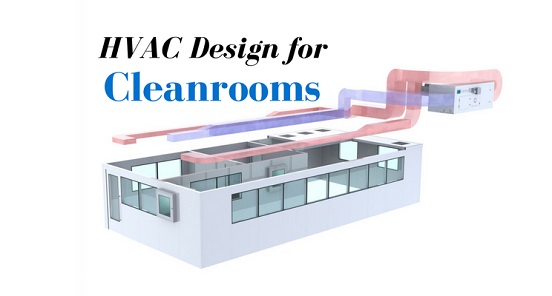HVAC Design for Cleanrooms
The HVAC system is at the heart of the cleanroom. Although many clients are unenthusiastic when broaching the subject, the HVAC system should not be overlooked given its central role. HVAC is actually the most complex and important system of a cleanroom facility as the HVAC is responsible for controlling air cleanliness, temperature, humidity, and pressure. This article aims at simplifying the cleanroom HVAC concept to facilitate conversations with your cleanroom supplier for your next project.
What is an HVAC cleanroom?
HVAC stands for Heating, Ventilation, and Air Conditioning. It is a general term for indoor environmental comfort, which provides indoor air quality (air changes per hour, temperature, and humidity).

Conventional vs. cleanroom HVAC
Similar to standard HVAC, the HVAC of a cleanroom controls the temperature and the humidity to different levels of precision to create a comfortable environment. Along with comfort, cleanroom HVACs differentiate themselves from conventional systems by their increased air supply, airflow patterns, the use of high efficiency filters, and room pressurization. The increased air supply brings more air changes per hour with HEPA filtered air circulating into the cleanroom many times per hour. In comparison, a conventional HVAC system usually counts two to four air changes per hour, whereas in a cleanroom it can range anywhere from 15 to 250 or more.
Cleanroom HVAC designs require knowledge of regulations, cleanliness level guidelines, airflow, room pressurization, temperature control, humidity control, and accounting of processes taking place inside.
The ventilation ducts are also different and require engineering knowledge. The HVAC must also maintain the appropriate pressure differential in order to prevent air from leaking from a less clean zone to a cleaner zone inside the cleanroom.
HVAC system vs. HVAC unit
People often confuse HVAC systems and HVAC air handling units (AHU). The air handler is simply the enclosure in which the air is heated, filtered, and cooled. It includes DX cooling coils, chilled water coils, electric heat or hot water heat coils and humidifiers. The HVAC system is, as its name spells out, the whole system, which includes the air handling unit, but also the duct work, the diffuser, the HEPA filters, the air return, and the control and monitoring system.
To read the entire article, visit Controlled Environments Magazine